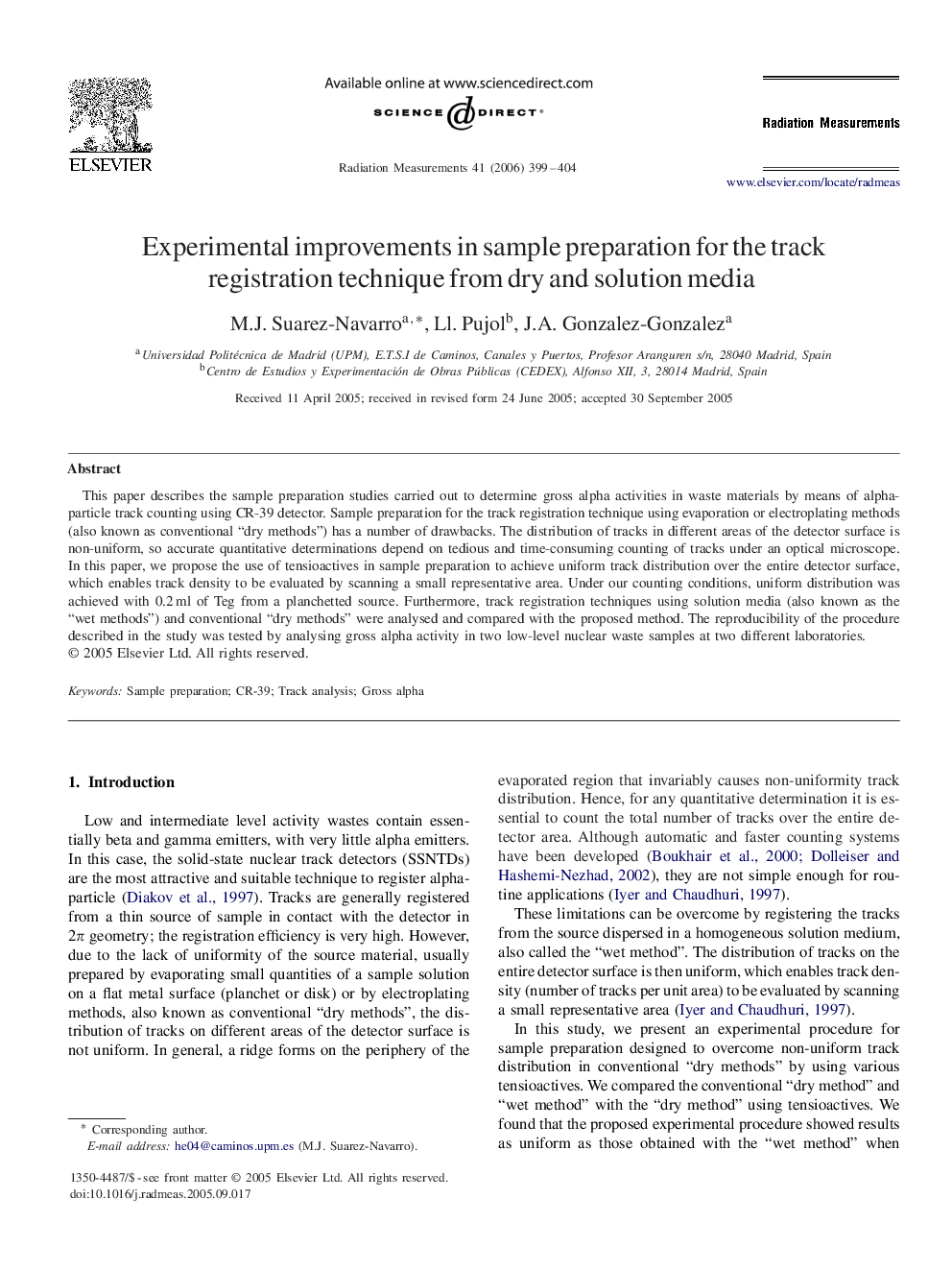| Article ID | Journal | Published Year | Pages | File Type |
|---|---|---|---|---|
| 1882224 | Radiation Measurements | 2006 | 6 Pages |
This paper describes the sample preparation studies carried out to determine gross alpha activities in waste materials by means of alpha-particle track counting using CR-39 detector. Sample preparation for the track registration technique using evaporation or electroplating methods (also known as conventional “dry methods”) has a number of drawbacks. The distribution of tracks in different areas of the detector surface is non-uniform, so accurate quantitative determinations depend on tedious and time-consuming counting of tracks under an optical microscope. In this paper, we propose the use of tensioactives in sample preparation to achieve uniform track distribution over the entire detector surface, which enables track density to be evaluated by scanning a small representative area. Under our counting conditions, uniform distribution was achieved with 0.2 ml of Teg from a planchetted source. Furthermore, track registration techniques using solution media (also known as the “wet methods”) and conventional “dry methods” were analysed and compared with the proposed method. The reproducibility of the procedure described in the study was tested by analysing gross alpha activity in two low-level nuclear waste samples at two different laboratories.
